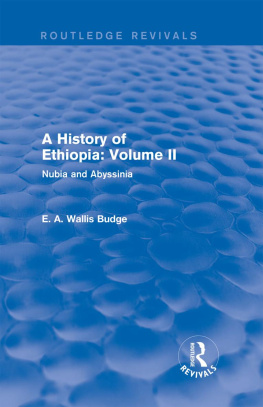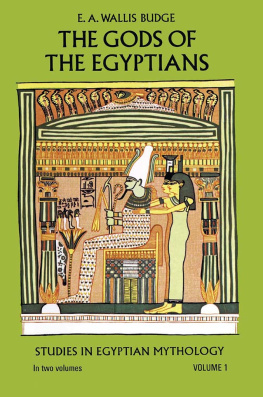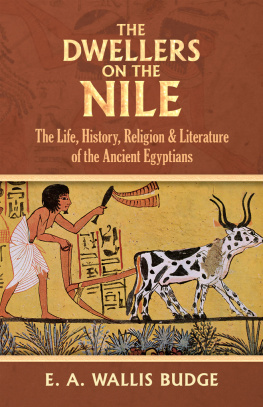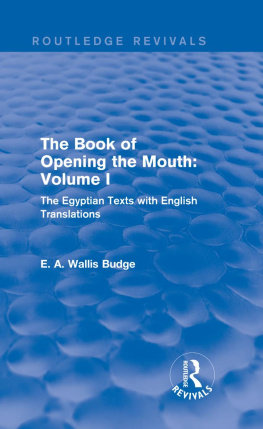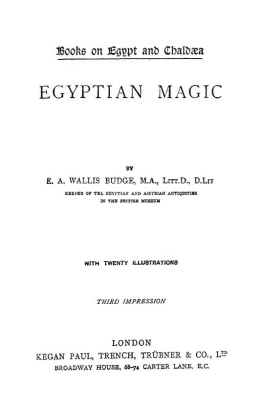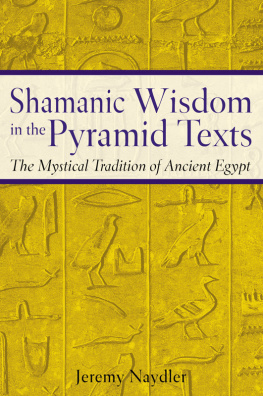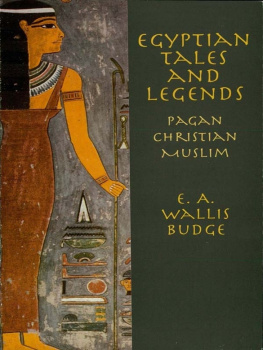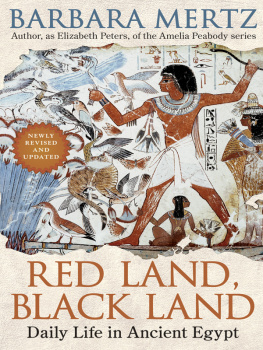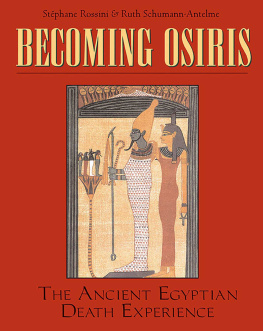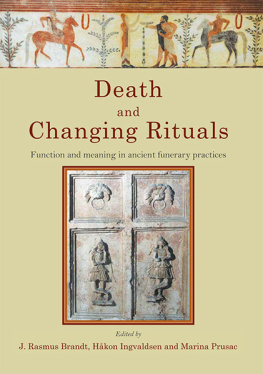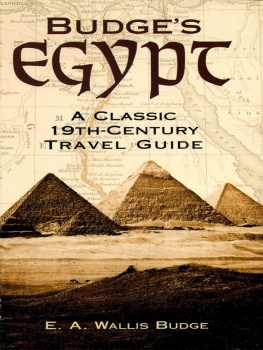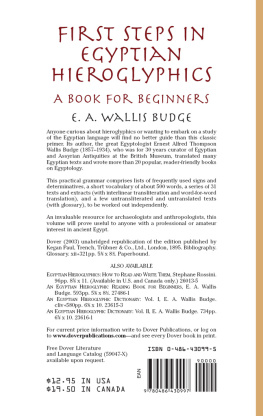E. A. Wallis Budge - The Liturgy of Funerary Offerings
Here you can read online E. A. Wallis Budge - The Liturgy of Funerary Offerings full text of the book (entire story) in english for free. Download pdf and epub, get meaning, cover and reviews about this ebook. year: 2021, publisher: Delhi Open Books, genre: Religion. Description of the work, (preface) as well as reviews are available. Best literature library LitArk.com created for fans of good reading and offers a wide selection of genres:
Romance novel
Science fiction
Adventure
Detective
Science
History
Home and family
Prose
Art
Politics
Computer
Non-fiction
Religion
Business
Children
Humor
Choose a favorite category and find really read worthwhile books. Enjoy immersion in the world of imagination, feel the emotions of the characters or learn something new for yourself, make an fascinating discovery.
- Book:The Liturgy of Funerary Offerings
- Author:
- Publisher:Delhi Open Books
- Genre:
- Year:2021
- Rating:5 / 5
- Favourites:Add to favourites
- Your mark:
- 100
- 1
- 2
- 3
- 4
- 5
The Liturgy of Funerary Offerings: summary, description and annotation
We offer to read an annotation, description, summary or preface (depends on what the author of the book "The Liturgy of Funerary Offerings" wrote himself). If you haven't found the necessary information about the book — write in the comments, we will try to find it.
This book has text and analysis of a key Egyptian ritual which was performed when preparing the corpse of a pharaoh for mummification. This is known as the Book of the Opening of the Mouth. The ritual consisted of offering a long sequence of foodstuffs, beverages, cosmetics and other consumables, along with a litany recited by the priests. This text was also painted on the walls of the royal tomb.
The Liturgy of Funerary Offerings — read online for free the complete book (whole text) full work
Below is the text of the book, divided by pages. System saving the place of the last page read, allows you to conveniently read the book "The Liturgy of Funerary Offerings" online for free, without having to search again every time where you left off. Put a bookmark, and you can go to the page where you finished reading at any time.
Font size:
Interval:
Bookmark:
THE LITURGY OF FUNERARY OFFERINGS
THE EGYPTIAN TEXTS WITH ENGLISH TRANSLATIONS
BY
E. A. WALLIS BUDGE
1909
THE present volume contains the Egyptian text and English translations of two copies of one of the most, important documents connected with the dead which have come down to us, namely, a detailed list of the offerings which were made to the dead, and also of the consecrating formulae which were recited by the chief officiating priest, as he presented them to a mummified body, or to a statue of the deceased. The ancient title of the composition, if it ever had one in early days, is unknown to us, but it has been called the "Liturgy of Funerary Offerings," because the document deals exclusively with the presentation of offerings to the dead, and because this title is convenient for reference.
This Liturgy is associated in the funerary texts in the tombs and papyri with another work entitled the "Book of Opening the Mouth" and this fact suggests that it is a portion of or a supplement to it, and that it is a development of the canonical List of Offerings which we have reason to believe was in existence under the IIIrd or IVth Dynasty. We know that funerary chapels were attached to the. pyramids and mastaba tombs of this period, and that offerings of meat and drink were made in them to the dead daily by properly qualified priests. It follows as a matter of course that the proceedings of the priests were regulated by some system, and that some kind of written service must have been recited regularly, and we are justified in believing that the Liturgy of Funerary Offerings was that which was commonly said for kings and other royal personages, and for men of high civil and ecclesiastical rank.
In the case of the "Book of Opening the Mouth" the object of the recital was, in the earliest times at least, to bring about the reconstitution and resurrection of the dead man, and even in later times, when the work was recited before a statue, on which the accompanying ceremonies were performed, the idea of the Egyptians on this matter remained unchanged. It must be remembered also that the Egyptians intended by means of ceremonies and formulae to bring back the Ka, or double, either to the dead man, from whom it had been temporarily separated, or to a statue which represented him; and when this had been done they believed it to be their bounden duty to provide meat and drink for its maintenance. It was the Ka and the heart-soul (Ba), not the spirit-soul (Khu), which fed upon the offerings, and if meat and drink of a suitable character, and in sufficient quantity, were not provided for them, these suffered from hunger and thirst, and if the supply of offerings failed, they perished by starvation. The texts make it quite clear that the Egyptians believed in a dual-soul; one member could not die, but the other only lived as long as it was fed with offerings by the living and provided with an abode, i.e., a statue. Offerings were brought to the funerary chapels and tombs daily, and additional gifts were presented on the days of all great festivals.
In very primitive times offerings of meat and drink were brought to the graves, and laid there for the souls of the dead to partake of at pleasure, just as is the case at the present day in -many places in the Sudan. When the ceremonies connected with the Book of Opening the Mouth were evolved, it became customary for the offerings to be brought forward at a certain place in the service, and afterwards, little by little, the canonical List of Offerings, and its later development, the Liturgy of Funerary Offerings, came into being.
As in the Book of Opening the Mouth the words spoken by the Kher-heb, or chief officiating priest, were believed to change the meat, and bread, and wine into divine substances, so in the Liturgy also the formula which was said over each element was supposed to change it into a divine and spiritual food, which was partaken of by the souls of the gods and of the dead. The material elements of the offerings were eaten by the priests and the relatives of the dead, and the act of eating brought them into communion with the blessed dead, and with the gods. The age of the belief in the transmutation of offerings cannot be stated, but it is certain that it was well known to the Egyptians under the Vth Dynasty, and there is reason to think that it was not unknown to their ancestors in the latter part of the Neolithic Period, and that it is coeval with the indigenous African belief in the immortality of the soul, and in a life beyond the grave.
The life of the Liturgy of Funerary Offerings was long. It is found in a more or less complete form in many mastaba tombs of the Ancient Empire, in a very complete form in the pyramids of Unas and Pepi II., in incomplete forms on sarcophagi and in tombs of the XIIth Dynasty, and in the tomb of Seti I. of the XIXth Dynasty, and in complete forms in the tomb of Peta-Amen-hp of the XXVIth Dynasty and in papyri written in the first or second century of the Christian Era. The changes textually in the complete copies of the different periods are very few, and we may say that this work was used by generation after generation, in a practically unaltered form, for about four thousand years.
A description of the labours of my predecessors on this important text will be found in the introductory matter to the present volume.
E. A. WALLIS BUDGE.
BRITISH MUSEUM,
August 5th, 1909.
THE tombs, temples, and religious literature of all periods of the history of Egypt proclaim with no uncertain voice that the ancient Egyptians believed in the resurrection of the dead, and that they possessed an innate conviction that the souls of the blessed renewed their existence in the world beyond the grave under circumstances and conditions which gave them happiness and prevented them from dying a second time. The consistent, persistent, ineradicable and unalterable belief in immortality is the chief fundamental of the Egyptian Religion, and the attainment of everlasting life was the end to which every religious ceremony was performed, and every funerary text written.
Now, although in the Dynastic Period the Egyptians believed that the dead rose again because Osiris rose from the dead, and that it was indeed he "who made mortals to be born again," and who bestowed upon the "re-born" new life, with new powers, spiritual, mental, and material, they spared no pains in performing the works which they thought would help themselves and their dead to put on immortality and to arrive in the dominions of him who was the "king of eternity and the lord of everlastingness." Every tradition which existed concerning the ceremonies that were performed on behalf of the dead Osiris by Horus and his "sons" and "followers" at some period, which even so far back as the time, of the IVth Dynasty, or about B.C. 3800, was extremely remote, was carefully preserved and faithfully imitated under succeeding dynasties, and for long after Christianity was established in the northern part of the Nile Valley, and Egypt was filled with Christian monks.
The formulae which were declared to have been recited during the performance of such ceremonies were written down and copied for scores of generations, and every pious, well-to-do Egyptian made arrangements that what had been done and said on behalf of Osiris should be done and said for him outside or inside his tomb after his death. No ceremony, however trivial, was considered unimportant, and no form of words was thought useless. New ceremonies and words might be added, for it was held possible that they might become a means of salvation, but nothing might be omitted intentionally. The natural result of this religious conservatism was that as centuries rolled on the significance of several funerary ceremonies was forgotten, and the meanings of many liturgical phrases were understood with less and less exactness, until at length they became mere collections of words, which conveyed little to the minds of those who heard them.
Next pageFont size:
Interval:
Bookmark:
Similar books «The Liturgy of Funerary Offerings»
Look at similar books to The Liturgy of Funerary Offerings. We have selected literature similar in name and meaning in the hope of providing readers with more options to find new, interesting, not yet read works.
Discussion, reviews of the book The Liturgy of Funerary Offerings and just readers' own opinions. Leave your comments, write what you think about the work, its meaning or the main characters. Specify what exactly you liked and what you didn't like, and why you think so.


